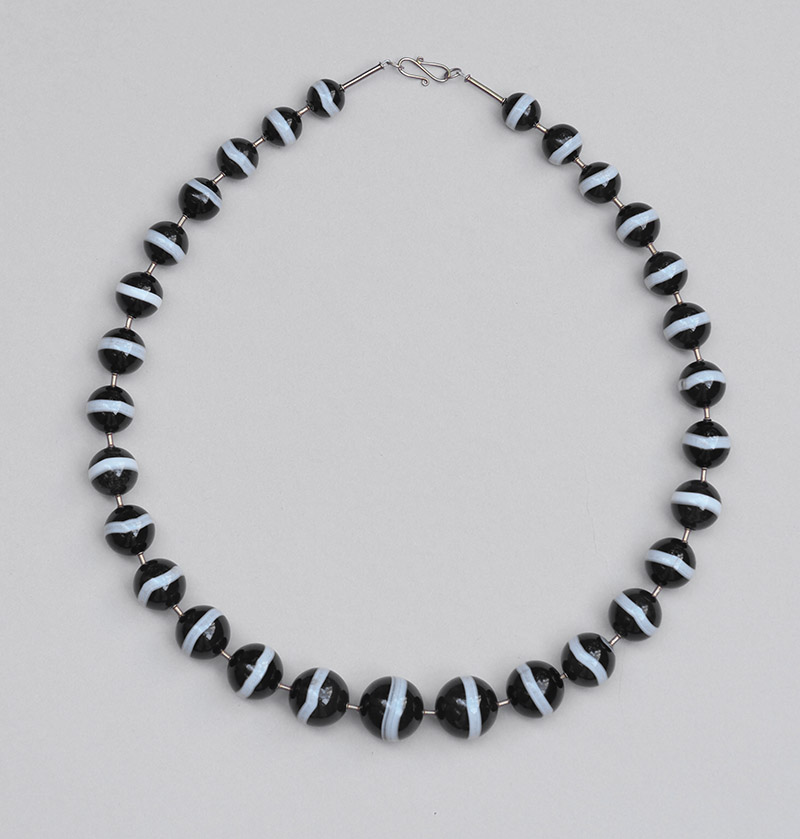| Re: Question regarding banded agate origins... | |||||
| Re: Question regarding banded agate origins... -- Mel H | Post Reply | Edit | Forum | Where am I? | |
08/16/2014, 10:51:05
The group of agates in your first image look Scottish indeed (i.e. mined in Scottland). These were highly fashionable in Victorian times, and still much sought after today. Yours may be Victorian as well. I am attaching a necklace made of Scottish agates strung with gold.
Suleimani is the commercial name used for banded agate beads in Islamic countries. I have been unable to find the reason for it. Some sellers say these beads come from King Solomon's Mines, which is far out but unreal. Others only use this word for banded agate beads of white/grey background and many comparatively thin black lines -- although there is no cultural reason for it, banded agates of other kinds being also called Suleimani from the Middle East to Southeast Asia.
My guess is that in old times the bulk of this stone was coming from mines located in the Suleiman Range (about the modern Iran/Pakistan border) probably to be cut in India, I mean Greater India (before partition).
But another script would be that the name refers to the Jugdment of Solomon(1 Kings 3:16-28) hereafter as told in Wikipedia:
'Two young women who lived in the same house and who both had an infant son came to Solomon for a judgment. One of the women claimed that the other, after accidentally smothering her own son while sleeping, had exchanged the two children to make it appear that the living child was hers. The other woman denied this and so both women claimed to be the mother of the living son and said that the dead boy belonged to the other.
After some deliberation, King Solomon called for a sword to be brought before him. He declared that there was only one fair solution: the live son must be split in two, each woman receiving half of the child. Upon hearing this terrible verdict, the boy's true mother cried out, "Oh Lord, give the baby to her, just don't kill him!" The liar, in her bitter jealousy, exclaimed, "It shall be neither mine nor yours—divide it!"
The king declared the first mother as the true mother, as a true, loving mother would rather surrender her baby to another than hurt him, and gave her the baby. King Solomon's judgment became known throughout all of Israel and was considered an example of profound wisdom.'
The beads would be then called Suleimani because they are so divided in two halves by the white ecuatorial line.Se non è vero, è ben trovato...

|